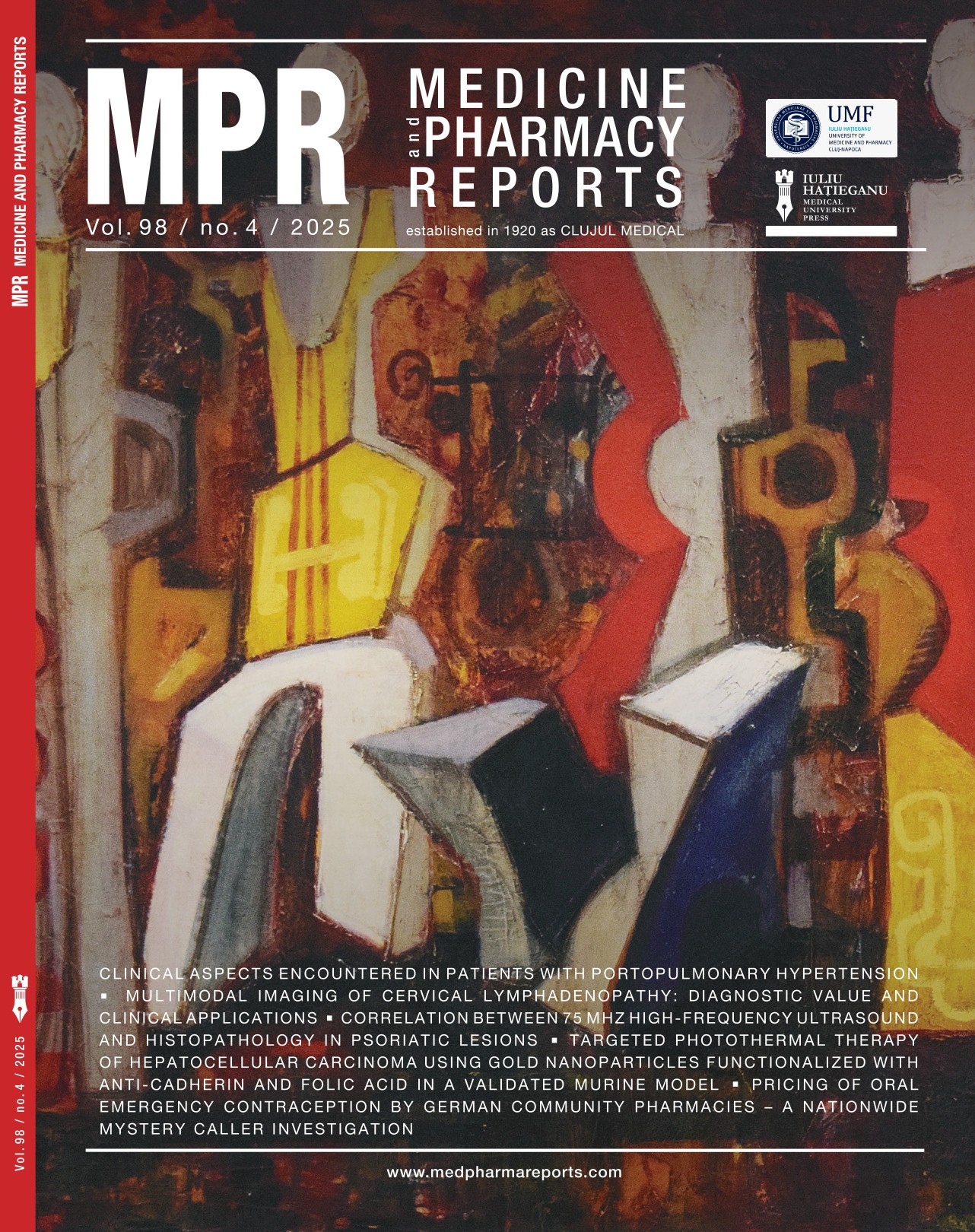Surgical resection for multiple brain metastases: a systematic review and meta-analysis of functional and survival outcomes
DOI:
https://doi.org/10.15386/mpr-2927Keywords:
brain metastases, BMS, multiple metastases, surgical resection, radiotherapyAbstract
Background. Brain metastases (BMs) are the most common intracranial tumors among adults, which exceed primary brain tumors by far. Surgery and radiotherapy represent the key local management of BM. However, the exact role of surgery is still under debate.
Objective. To comprehensively evaluate the safety and efficacy of surgical management in patients with brain metastases.
Methods. We searched four electronic databases from January 2023 until September 2024 (PubMed, Scopus, Web of Science, and Cochrane Library). All the studies assessing the role of surgery in managing BM were included. Our primary search targets were survival, mortality, and postoperative Karnofsky Performance Status (KPS). The results were reported as pooled mean or proportions with 95% confidence interval (CI) for continuous and dichotomous data, respectively.
Results. Eight observational studies comprising 1010 patients met our inclusion criteria. The pooled mean of overall survival was 10.482 with 95% CI [7.651, 13.314]. While the pooled proportion of one-year and two-year survival was (0.451, 95% CI [0.320, 0.582]) and (0.240, 95% CI [0.112, 0.367]), respectively. We found the pooled proportion of overall mortality to be 0.535 with 95% CI [0.278, 0.793]. Patients with immediate postoperative KPS improvement showed a pooled estimate of 0.463 with 95% CI [0.243, 0.683].
Conclusion. Surgical resection is an effective therapeutic option for patients with BMs. Yet, careful patient selection and surgical technique are crucial for reducing postoperative complications and death.
Downloads
Published
How to Cite
Issue
Section
License
Copyright (c) 2025 Florin Adrian Tofan, Ahmed T. Massoud , Cosmin Ioan Faur , Stefan Ioan Florian
The authors are required to transfer the copyright of the published paper to the journal. This is done by agreeing to sign the Copyright Assignment Form. Whenever the case, authors are also required to send permissions to reproduce material (such as illustrations) from the copyright holder.

The papers published in the journal are licensed under a Creative Commons Attribution-NonCommercial-NoDerivatives 4.0 International License.

